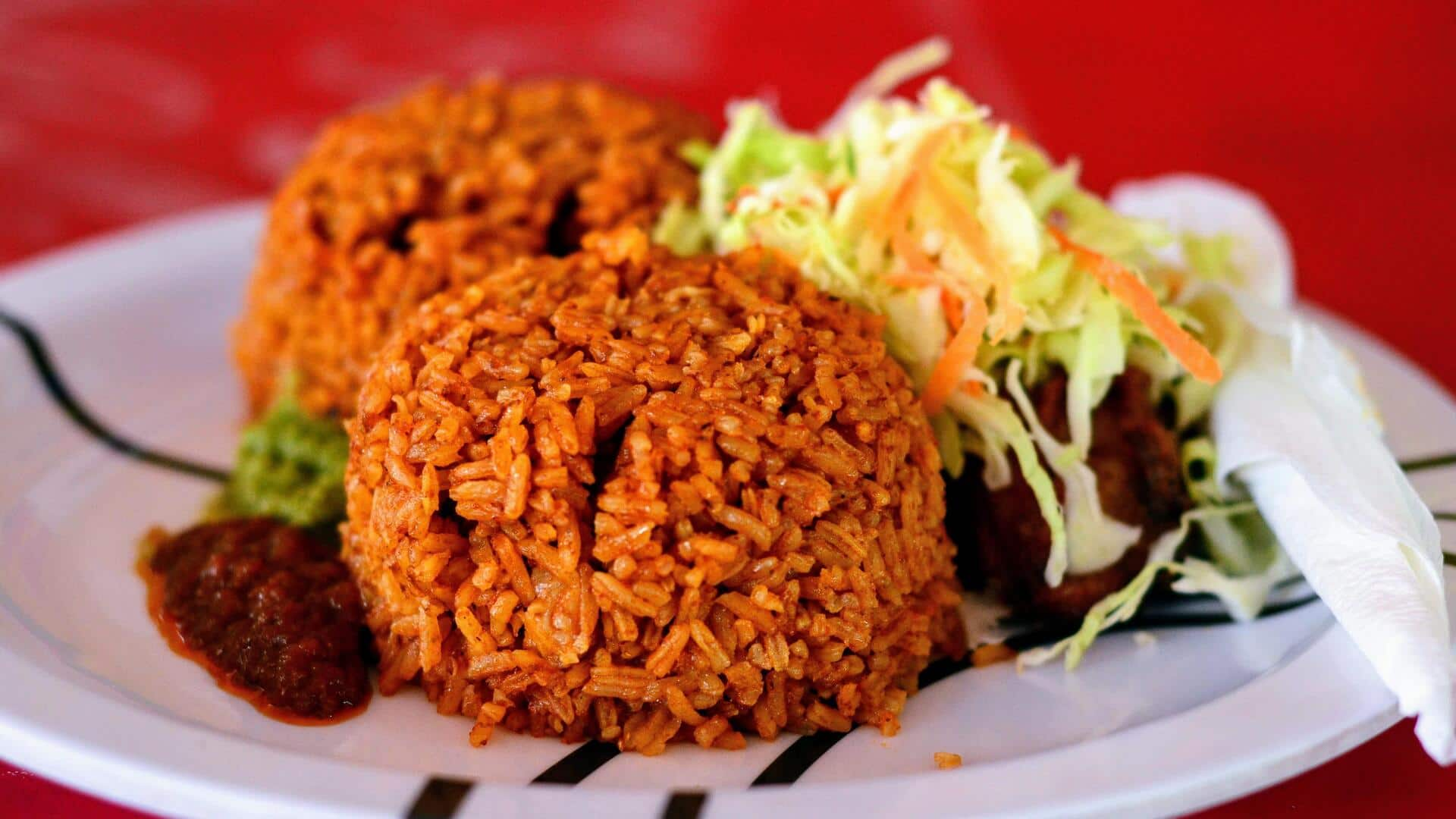
Tracing Jollof's journey: West Africa's iconic rice dish
What's the story
Jollof rice is an iconic dish that has become a West African favorite. The dish originated in the Senegambian region, where it was first cooked by the Wolof people. Over the years, the savory rice dish traveled across West Africa, with each country giving it its signature touch. Today, Jollof rice is known for its exquisite taste and cultural relevance, often served at events and celebrations.
Core components
Ingredients that define Jollof
The basic ingredients of Jollof rice are rice, tomatoes, onions, and peppers. These elements create the base of the dish's unique flavor profile. Vegetables and spices are commonly added to spice it up even more. Each region may have its own variation in the level of spices or additional ingredients such as beans or plantains.
Preparation styles
Cooking techniques across regions
Different countries have developed their own methods of preparing Jollof rice. In Nigeria and Ghana, for instance, the slight differences in cooking techniques yield different flavors and textures. While some prefer long-grain parboiled rice to get a firmer texture, others use basmati to get a softer feel. The oil and spices also play a key role in defining regional tastes.
Symbolism
Cultural significance of Jollof rice
Jollof rice is not just a dish, it is a cultural treasure for the entire West Africa. It symbolizes the unity among different communities, reveling in the common culinary heritage they share, despite their differences. Found regularly at weddings, festivals, and family gatherings, Jollof rice represents hospitality and the celebratory spirit that is rooted in these cultures.
Contemporary twists
Modern adaptations of Jollof rice
In recent years, chefs across the globe have played around with modern versions of classic Jollof recipes. New ingredients or fusion methods are being tried from other cuisines, but keeping its core essence intact—demonstrating how versatile this iconic dish can get without drifting away from its roots completely!